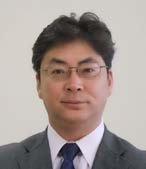
SANKEN
The University of Osaka
大阪大学
産業科学研究所

LAST UPDATE 2017/02/26
-
研究者氏名
Researcher Name関野徹 Tohru SEKINO
教授 Professor -
所属
Affiliation大阪大学 産業科学研究所
先端ハード材料研究分野
SANKEN, The University of Osaka
Department of Advanced Hard Materials -
研究キーワード
Research Keywords構造機能共生型材料
セラミックス基材料
低次元ナノマテリアル
構造-機能チューニング
Multifunctional Materials Design and Creation
Ceramics and Composites
Low-dimensional Nanostructured Materials
Structure-Function Tuning
- 研究テーマ
Research Subject -
次元構造制御による先端材料への高次機能集約
Multi-functionalization of Advanced Materials through Dimensional Structure Design and Control
研究の背景 Background of the Research
高度に発展した私たちの社会は多様な材料によって支えられています。一方で地球環境やエネルギー、加速する高齢化社会など解決すべき様々な問題も生じています。この様な課題を解決し、快適で住みやすい環境と持続的社会を実現するために材料に求められることは、簡便で低環境負荷なプロセスで作製できると共に、それ自体がデバイスの様に機能できること、すなわち、多彩な機能をひとつの材料に集約した「機能共生型マテリアル」の創製と実用化が必要となります。
Highly developed our society is supported by a wide variety of materials. On the other hand, there are various problems to be solved such as environment, energy, accelerated aging society and so on. To solve them and to realize the sustainable and environmentally comfortable society, we believe that creation of novel materials, which can work like as a device, is an important key through simple and low environmental impact processes. Thus, the creation and practical application of "multifunctional material" in which various functions are coexisting synergistically in one material is strongly required.
研究の目標 Research Objective
セラミックスや金属などを中心とした材料のナノからマクロまでの構造設計・制御および融合をキーテクノロジーとして、機能集積型のバルクセラミックス材料や低次元半導体酸化物ナノマテリアルの創製を行い、これら構造や基礎物性・特性評価および機構解明を通じて、新規な構造特性や機能特性を有する先端機能性構造材料の研究開発を行っています。これらを通し、今日の社会が抱える課題解決に資する次世代型基盤材料の創出とその応用を指向しています。
Based on the design, control and fusion of materials nano to macroscopic structures for ceramics and metals, we are focusing on fabrication of functional coexistence ceramic-based materials, low-dimensional oxide semiconductor nanostructured materials and so on, and investigating their detailed structures, fundamental properties, functions analysis and mechanisms. Through these researches, we are aiming to create advanced next-generation functional structure materials to solve various problems in our society.
研究図Figures

論文発表 / Publications
<総説>まてりあ, 53(11), 546(2014).
J. Ceram. Soc. Japan, 120, 307(2012)., Res. Chem. Intermed., 39, 1581(2013)., ACS Appl. Mater. Inter., 6, 2759(2014). Mater. Lett., 142, 7(2015).
研究者連絡先 / HP
- sekino
 sanken.osaka-u.ac.jp
sanken.osaka-u.ac.jp - http://www.sanken.osaka-u.ac.jp/labs/mmp/